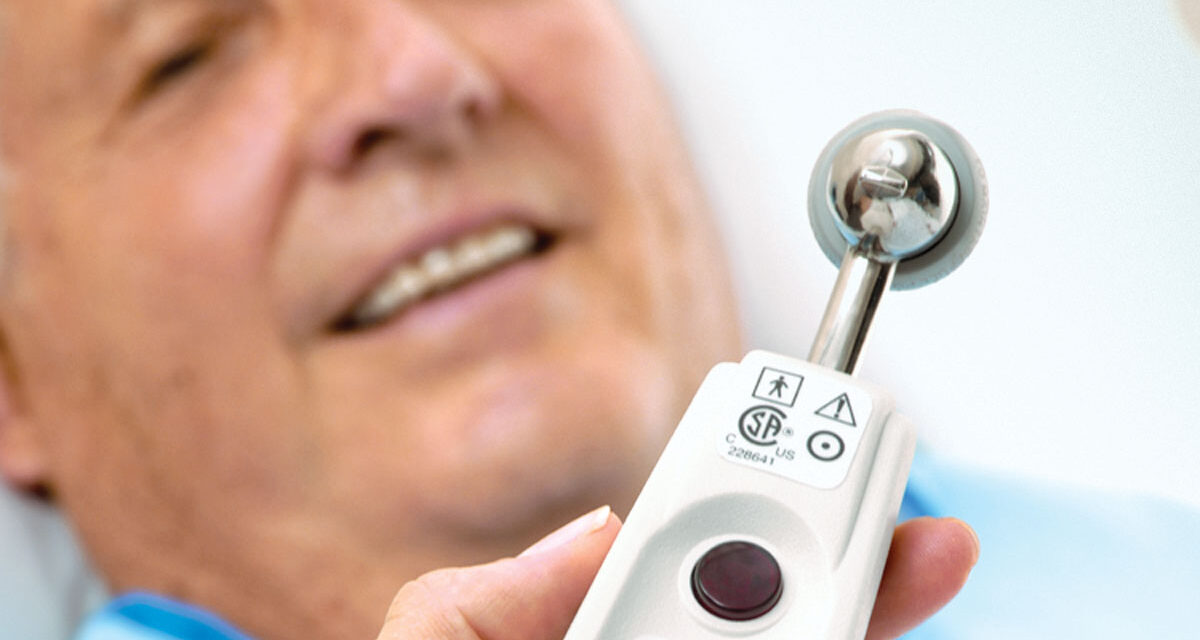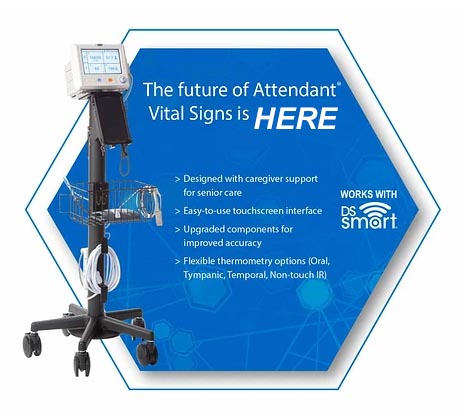How to Select The Best Temporal Thermometer Scanner
Throughout the COVID-19 pandemic, temporal temperature scanners have risen in popularity due to their accuracy and ease of use. While healthcare professionals have several options for taking temperatures, temporal thermometry provides advantages over other thermometers such as oral and tympanic.
Body temperature is a vital sign, so it’s important that a thermometer connects accurate information to caregivers. A reliable medical thermometer can allow healthcare professionals to better assess and assist with patient conditions depending on their temperature readings. Learn more about how accurate temporal thermometers are as well as how to choose the best temporal scanners for your patients’ unique needs.
Temporal Thermometers FAQ:
What is a temporal temperature scanner?
A temporal thermometer scanner is an infrared thermometer designed for accurate, completely noninvasive temperature assessment by scanning the temporal artery (TA), a branch of the carotid artery. Due to their contactless and easy-to-read abilities, these head scan thermometers have grown in popularity amongst other medical types of thermometers, such as digital, oral and tympanic.
What are the main differences between temporal vs. ear thermometers?
A temporal thermometer measures the temperature of the temporal artery in the forehead whereas a tympanic thermometer measures the temperature of the eardrum.
What is the temporal temperature range?
The temporal temperature range for forehead temperature measurements is 94° to 110°F (34.5° to 43°C).
What are the advantages of temporal thermometers vs. other thermometers?
There are several advantages of a temporal thermometer. First, they are as accurate as a rectal temperature reading (the gold standard for accuracy, but not for comfort for healthcare patients). The noninvasive nature of temporal thermometers makes them a much more preferred method to take temperatures, and healthcare professionals can rest assured temporal thermometers take into account the ambient temperature when taking a reading. Temporal thermometers also self-calibrate after every reading.
Temporal thermometers can also be cleaned with alcohol wipes, making probe cover usage optional and providing the lowest total cost of ownership for this essential tool in Senior Living and Healthcare settings. When choosing temporal thermometers, also look at warranty coverage.
As with all clinical equipment, proper maintenance and collection factors will impact reading accuracy. For the most accurate temporal artery thermometer readings, these can include:
- The lens should be cleaned every two weeks
- Wait to take readings until 10 minutes after a patient comes in from a cold or warm environment
- Wearing a hat or having long hair can result in a high reading
- Batteries need to be replaced periodically
- Greater upfront costs
How accurate are temporal head thermometers?
Infrared temporal head thermometers have proven to be quite accurate and efficient at taking patients’ body temperature readings. Always defer to clinical healthcare professional guidance as well as specific temporal temperature manufacturing directions for specific units. However, in general, to ensure the accuracy of head thermometer readings, it’s important to consider the following:
- Follow positioning directions. Ensure the thermometer is no more than 2 inches away from the center of a patient’s forehead and that their forehead is clear of hair.
- Hold the thermometer steady. Both the thermometer and the patient must be free of movement to take the most accurate temporal artery temperature.
- Wait until the temporal artery thermometer has signaled that it has completed a reading before moving it. To ensure further accuracy or if any interferences happened, take a second temperature reading.
What are the advantages and disadvantages of an oral thermometer?
Oral thermometers are almost as accurate as a rectal temperature when used properly and have a lower upfront cost than a temporal thermometer.
But unlike other thermometers, like temporal, their accuracy depends on several factors, such as correct placement in the sublingual pocket and the resident keeping his or her mouth closed during measurement.
What are the advantages and disadvantages of tympanic thermometers?
Tympanic thermometers are the fastest to get a measurement and have lower upfront costs than temporal thermometers. But they are not as accurate as temporal or oral thermometers, require the use of probe covers and generally have shorter warranties.
Choosing the best temporal scanner for your healthcare setting
There’s a lot to consider when assessing thermometer accuracy and choosing the best temporal scanner for your healthcare setting. Learn more about choosing the best thermometer for your patients based on speed, accuracy, cost, maintenance and more. Interested in leveraging smart care technology for your vital signs readings? Explore DS smart, an EMR connectivity solution that can be paired with wireless vital signs monitors and scales.
Just Launched!
Direct Supply has added its new Vital Signs Monitor to our popular family of Attendant® products – powered by DS smart. Among its many benefits, this innovative solution gives healthcare professionals the advantage of temporal thermometry.
If you’d like more information on this new product, let us know!





